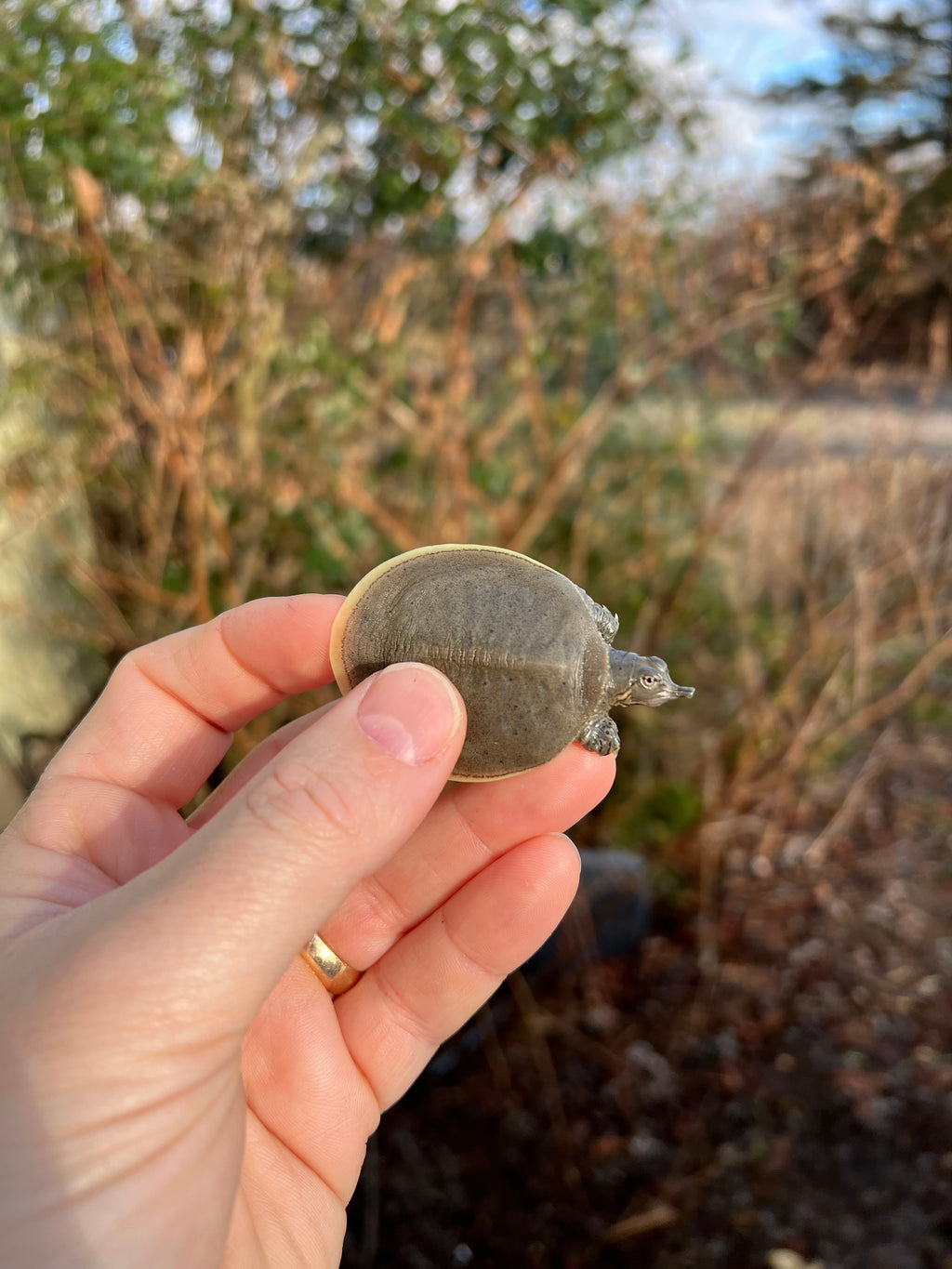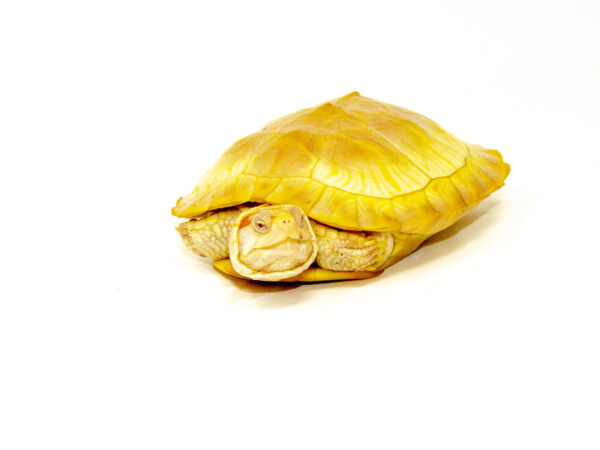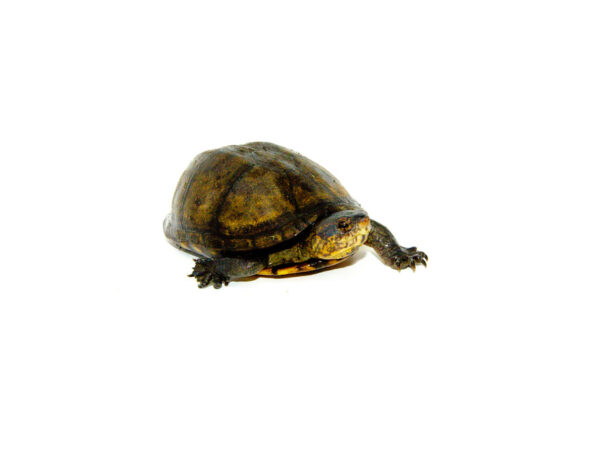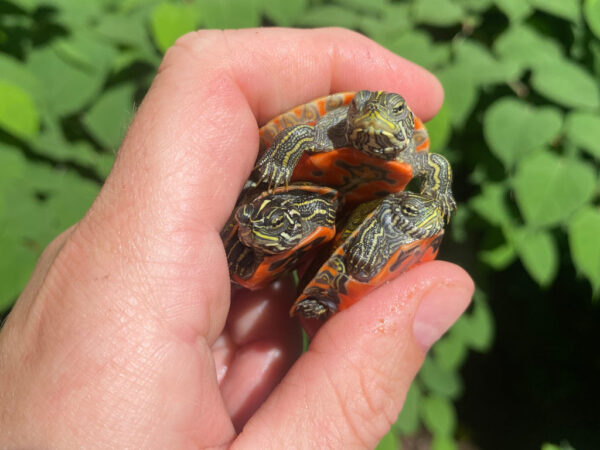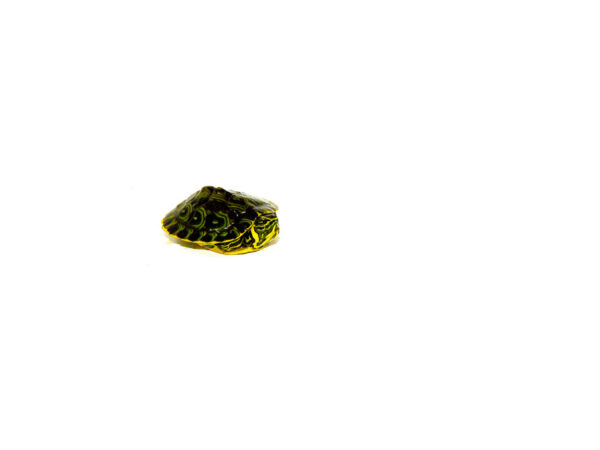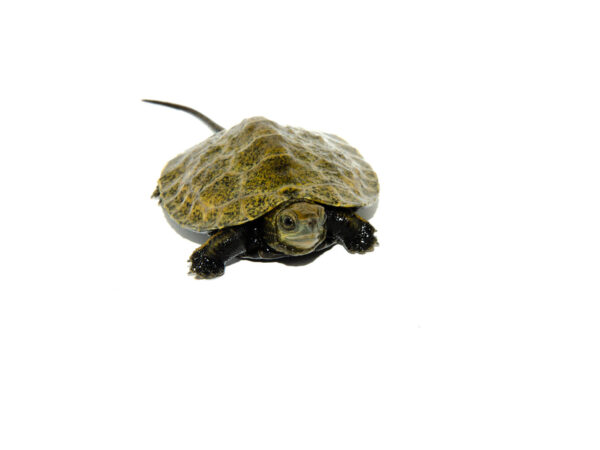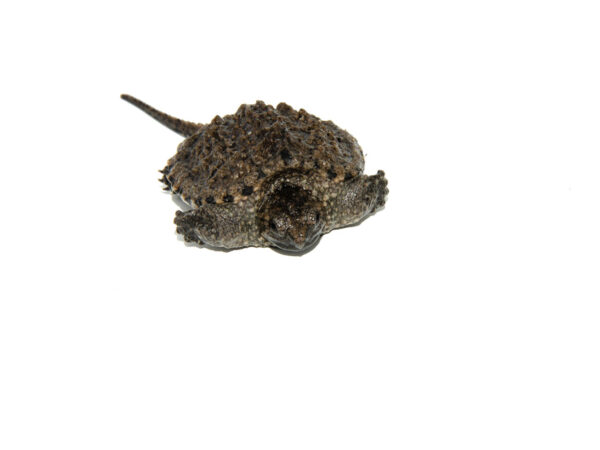Gulf Coast Spiny Softshell Turtle Baby (Apalone spinifera aspera) For Sale
$14.99
Gulf Coast Spiny Softshell Turtle Baby (Apalone spinifera aspera) For Sale
The Gulf Coast Spiny Softshell Turtle Baby For Sale has a flatter appearance than most turtles. It is an olive gray to tan coloration with small black spots on its top shell, which is called a carapace. It also has bumpy projections beginning at the front edge of the carapace and going partway down the center of its shell. Located along the bottom edge of the carapace are three lines that follow the edge of the shell going back towards its’ head. Females are larger than males and can be up to 18 inches in diameter, while males can be up to 10 inches. It can pull its legs and head into its shell and close up completely to protect itself from predators.
DISTRIBUTION:
The Gulf Coast spiny softshell turtle is located from northern North Carolina all the way along the Gulf Coast to eastern Louisiana.
HABITAT:Gulf Coast Spiny Softshell Turtle Baby (Apalone spinifera aspera) For Sale
The Gulf Coast spiny softshell turtle can be found in most wetlands throughout their range including rivers, streams, ponds and large reservoir.
FEEDING HABITS:
Most of the time, they bury themselves in the mud with only their eyes and nostrils exposed and wait to attack prey such as small fish or amphibians, that pass by. The Gulf Coast spiny has a long neck that can quickly extend allowing it to capture passing prey with its mouth.
LIFE HISTORY AND ECOLOGY:
The Gulf Coast spiny softshell turtle becomes sexually mature at 8 – 10 years of age. Males put on a courtship display by waving their feet and extending their necks to attract a female. Breeding usually occurs in April and May and 6 – 24 eggs are laid in a hole in June or July. Hatching generally occurs in early fall after an approximate 80 day incubation period.
REFERENCES:
Smith, H.M. and E.D. Brodie, Jr. 1982. Reptiles of North America: A Guide to Field Identification Golden Press. New York. 240 pp. (Trionyx spiniferus asperus, pp. 32-33.)
AUTHOR:
Adam Pritchett, Wildlife Biologist, Alabama Division of Wildlife and Freshwater Fisheries

